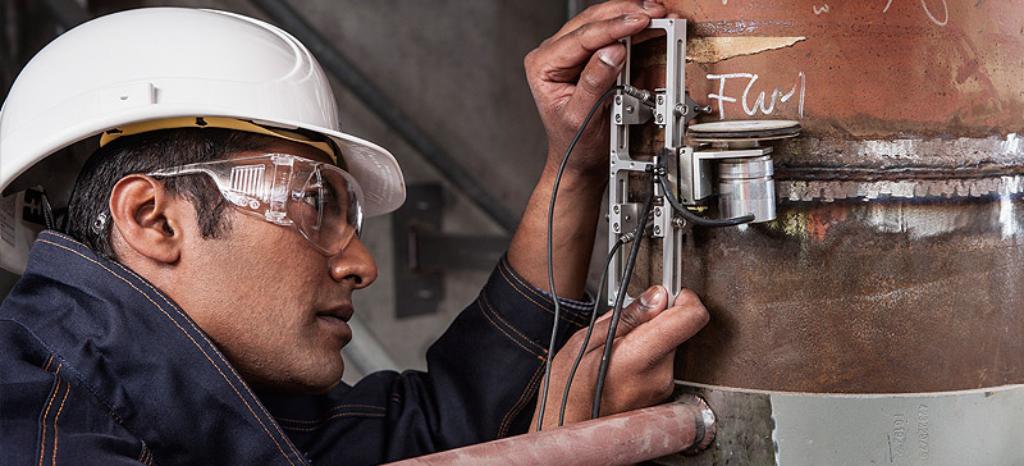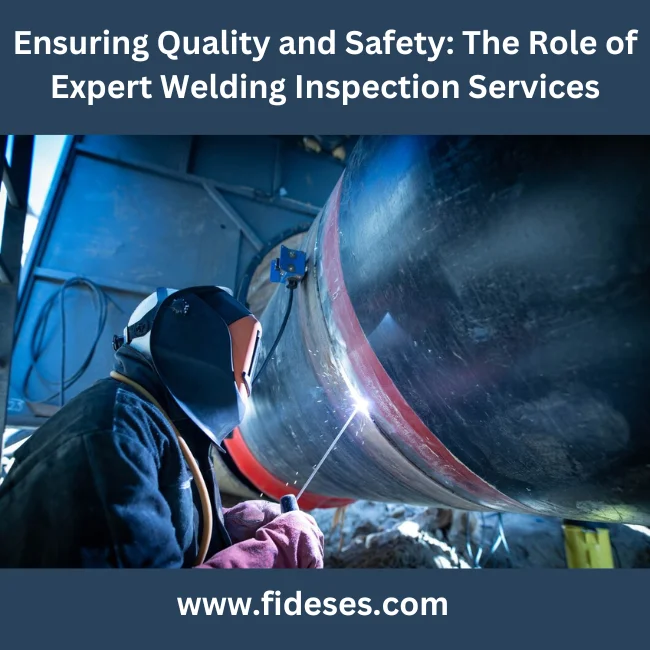How Welding Inspection Milwaukee Makes Sure Safety and Top Quality in Your Tasks
How Welding Inspection Milwaukee Makes Sure Safety and Top Quality in Your Tasks
Blog Article

Exploring the Different Approaches and Requirements of Welding Assessment for Getting Conformity and Reliability in Engineering Applications
The significance of welding examination in design applications can not be overemphasized, as it serves as an essential protect for guaranteeing structural integrity and conformity with sector requirements. Different techniques, consisting of aesthetic examination and progressed non-destructive screening techniques, give essential insights right into the top quality of welds. Adherence to established regulatory criteria such as those from AWS and ASME develops a framework for responsibility and excellence. The landscape of welding evaluation is consistently evolving, motivating a better assessment of emerging practices and their effects for design dependability. What might these growths require for future jobs?
Importance of Welding Inspection
Welding inspection plays a critical role in making sure the stability and safety and security of bonded frameworks. This procedure includes the systematic assessment of welds to verify compliance with predetermined criteria and requirements. The relevance of welding examination can not be overstated, as it functions as a secure versus possible failures that might arise from inadequate welding techniques. Via extensive evaluation, issues such as fractures, gaps, and poor fusion can be identified early, thus avoiding devastating failings that might bring about architectural collapse or safety threats.
Additionally, welding inspection is necessary for preserving high quality guarantee throughout the welding procedure. It makes sure that the welds meet the required mechanical and physical homes required for their intended applications. Normal evaluations additionally cultivate a society of liability and continuous enhancement within welding procedures, motivating adherence to finest practices and industry criteria.
In controlled industries such as production, aerospace, and building, stringent welding examination procedures are mandated to abide by legal and security needs. Eventually, effective welding assessment not just protects human life and building however additionally improves the long life and dependability of bonded frameworks, making it a vital element of engineering and building and construction.

Usual Welding Assessment Techniques
A selection of inspection methods are utilized to analyze the high quality and integrity of welds, each customized to detect particular kinds of defects. Among the most typical techniques is visual assessment, which includes a comprehensive exam of the weld surface area to recognize visible problems such as fractures, undercuts, and insufficient blend. This technique is typically the first step in the assessment procedure due to its simpleness and cost-effectiveness.
One more widely used method is radiographic assessment, where X-rays or gamma rays permeate the weld to reveal interior flaws. This method is especially efficient for detecting porosity and additions within the weld material. In a similar way, ultrasonic testing employs high-frequency acoustic waves to identify internal imperfections, supplying a detailed analysis of the weld's honesty.
In addition, magnetic particle inspection is used for ferromagnetic products, enabling the detection of surface area and near-surface defects by applying magnetic fields and observing bit patterns. Dye penetrant testing involves applying a liquid color to the weld surface area, disclosing cracks and other discontinuities upon assessment (Welding Inspection Milwaukee). Each of these approaches plays an essential duty in making sure weld top quality and conformity with industry standards
Non-Destructive Evaluating Strategies
Non-destructive testing (NDT) techniques are important tools in the evaluation of weld high quality, permitting examiners to evaluate the honesty of bonded joints without triggering damage to the products. Different NDT approaches are used to identify potential defects, making sure that welds meet the required standards for safety and performance.
Among the most common methods is ultrasonic testing (UT), which uses high-frequency sound waves to discover internal defects such as voids or splits. Radiographic screening (RT) employs X-rays or gamma rays to produce images of welds, disclosing any her comment is here kind of suspensions within the material. Magnetic particle testing (MT) works for spotting surface and near-surface issues in ferromagnetic products via the application of electromagnetic fields and contrasting bits.
Liquid penetrant screening (PT) is an additional extensively made use of technique that involves using a dye to the surface of the weld, which permeates right into any type of splits, making them visible under ultraviolet light. Each of these techniques supplies unique advantages and limitations, and the selection of an appropriate method is crucial to achieving exact assessments of weld stability. Ultimately, the execution of NDT techniques significantly adds to the integrity and safety and security of engineering applications.

Governing Criteria and Conformity
In the world of welding evaluation, adherence to governing standards and compliance is extremely important to guarantee the safety and dependability of bonded structures (Welding Inspection Milwaukee). Different companies, consisting of the American Welding Culture (AWS), the American Society of Mechanical Designers (ASME), and the International Company for Standardization (ISO), have actually established useful source guidelines that regulate welding practices and evaluation treatments. These criteria provide a framework for quality control, detailing the essential qualifications for inspectors and the approaches for assessing weld stability
Conformity with these governing criteria not just enhances the structural honesty of bonded settings up yet also mitigates threats linked with failings, which can have catastrophic consequences. Evaluations should be done utilizing specified treatments, including visual, ultrasonic, and radiographic techniques, to guarantee that welds satisfy defined criteria.
Additionally, adherence to these standards is typically required by law, specifically in markets websites such as building, aerospace, and manufacturing. Regular audits and certifications are necessary to keep compliance, thus cultivating a culture of safety and top quality within organizations. Ultimately, governing requirements and compliance work as the backbone of trusted welding examination methods, making sure that crafted frameworks satisfy both performance assumptions and security needs.
Ideal Practices for Welding Assessment
While maintaining conformity with regulatory requirements is crucial, carrying out ideal practices for welding examination additionally enhances the safety and honesty of welded structures. Reliable welding inspection begins with detailed planning, that includes recognizing the specific demands of each task and guaranteeing examiners are trained in relevant techniques and requirements.
Making use of an extensive inspection checklist helps to make certain all crucial aspects are examined, such as weld dimension, penetration, and visual issues. Non-destructive screening (NDT) strategies, such as ultrasonic or radiographic screening, ought to be employed where suitable, giving a much more thorough assessment of weld quality without endangering the stability of the products.
Documents plays a considerable function in best techniques; maintaining accurate documents of evaluations, consisting of photos, test outcomes, and conformity reports, makes sure liability and promotes future evaluations. In addition, promoting a society of open interaction in between welders and assessors can lead to early recognition of possible concerns, advertising immediate restorative actions.
Verdict
In recap, the application of extensive welding examination approaches and adherence to developed criteria are vital for making certain conformity and integrity in engineering applications - Welding Inspection Milwaukee. Techniques such as aesthetic inspection, radiographic screening, and ultrasonic screening function as crucial devices in identifying issues and maintaining top quality assurance. By promoting a society of liability and excellence, companies can improve the integrity and long life of bonded structures, ultimately contributing to the safety and security and efficacy of design jobs
Various techniques, consisting of aesthetic assessment and progressed non-destructive testing techniques, provide crucial insights into the quality of welds.Welding inspection plays an essential duty in ensuring the integrity and security of bonded frameworks.A range of inspection techniques are utilized to evaluate the quality and stability of welds, each customized to identify specific types of defects.One more widely made use of method is radiographic examination, where X-rays or gamma rays permeate the weld to expose internal problems.In the realm of welding examination, adherence to regulatory criteria and compliance is critical to make certain the safety and security and reliability of bonded frameworks.
Report this page